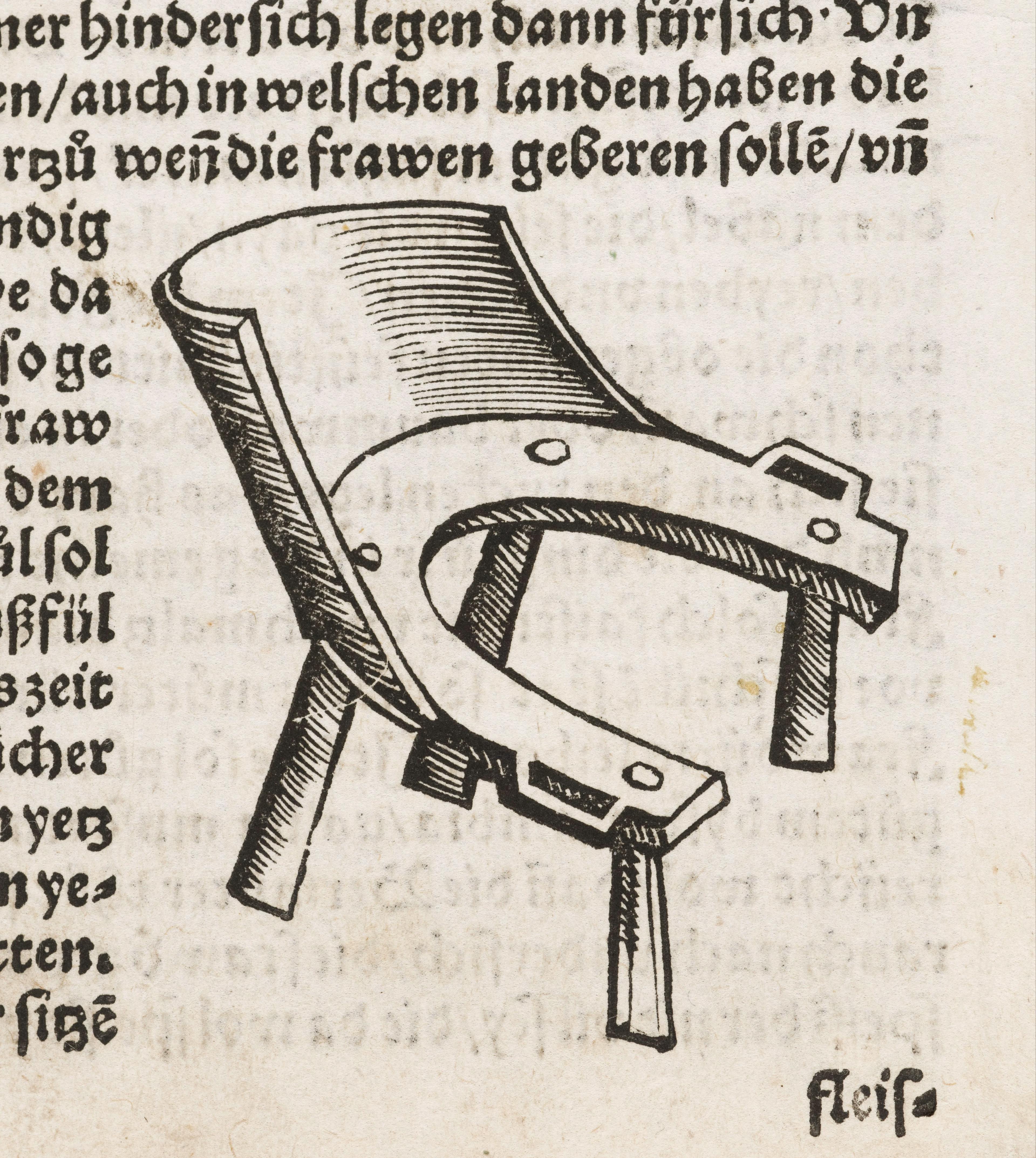The Creepy Reason Women Give Birth In The Position They Do
If you’ve ever had a baby, you probably gave birth lying on your back. While you likely thought nothing of it then, have you ever wondered why that’s the most popular birth position?

While there are plenty of birthing positions (including many variations of lying on your back, like the lithotomy position and the semi-recumbent position) that you can try, you probably know little to nothing about the history of birthing positions. According to Taylor Gossett (@getreal_girlfriend), a fertility and health coach on Instagram, the history of birthing positions is not only creepy, but involved King Louis XIV of France.
In the Instagram reel, she says, “King Louis XIV had a fetish for watching women give birth, which changed modern gynecology forever, and not in the best way.”
She continues to describe how women used to give birth sitting, squatting, or kneeling, which helped align their muscles to make giving birth easier, but Louis XIV popularized women giving birth on their backs because he had a fetish. She also goes on to explain how the position is easier for the doctor (but not the patient), increasing the possibility of complications during birth.
While her claim may be creepy and disturbing, is there any truth to it?
A Brief History of Birthing Positions
Women have been giving birth since the start of human history, but giving birth on their backs wasn’t always the norm. Before Louis XIV’s reign, popular birthing positions included squatting, kneeling, sitting, or on all-fours. One popular historical example includes a bas-relief at the Temple of Esneh in Egypt depicting Cleopatra (69-30 BC) giving birth in a kneeling position, surrounded by five women attendants, one of whom delivers the child.

In other cultures, special furniture was created to help the birthing process and make birthing positions more comfortable for women. One of the most famous examples is the birthing stool, which allowed women to squat comfortably while sitting upright, making the process quicker and more comfortable. The earliest birthing stools can be dated back to Ancient Babylon in 2000 BC and were also popular in Ancient Egypt, Ancient Greece, and medieval Britain. The position that the birthing stool created was effective because it “maximizes the ability of muscles (abdominal, back, stomach, legs, arms, and vaginal sphincter) to efficiently work in concert.”

How King Louis XIV of France Changed Childbirth
Louis was the father of three legitimate children and at least 18 illegitimate children (born via mistresses instead of his first or second wife), and he grew fond of (possibly to the level where it was a fetish) watching women give birth. During Louis’ reign (1643-1715), a French doctor named Francois Mauriceau advocated for a new recumbent position for childbirth. Dr. Mauriceau promoted this position because he "viewed pregnancy as an illness" and believed that this position was the easiest way for doctors to remove the baby (or the “tumor of the belly,” as he called it). Though the position helps doctors see the birth clearly, some doctors also believe that the recumbent position “prolongs labor and slow contractions.”
It’s important to note that pregnancy and birth were viewed differently in the 16th and 17th centuries. Due to the lack of modern medical technology (or knowledge) and a high infant mortality rate, giving birth was often a life-threatening scenario. You could argue that a position that would give the doctor (or midwife) a better view of the birth would decrease complications or deaths (whether it’s the baby or the mother), but allegedly Louis XIV preferred this position for reasons that weren’t medical.
According to the American Journal of Public Health, King Louis XIV helped to popularize this new recumbent position because he allegedly "enjoyed watching women giving birth, he became frustrated by the obscured view of birth when it occurred on a birthing stool, and promoted the new reclining position.” He made the women lay on their back to give birth to elongate the process and employed men instead of midwives so they would be less empathetic.

The article continues, “The influence of the King's policy is unknown, although the behavior of royalty must have affected the populace to some degree." Royals had a strong influence on the culture of 17th-century France, popularizing the birthing position among both the noble and peasant classes. Similar to how celebrities and influencers set fashion, health (think Gwyneth Paltrow’s Goop and Kourtney Kardashian’s Poosh), and beauty standards today, royals held this position for centuries.
So Should You Change Birthing Positions?
So, knowing what you now know about King Louis and the most common birthing position, what should you do? Well, giving birth is a personal and intimate experience, so it only makes sense for you to make the decision as to how you’ll deliver your baby. There is no one-size-fits-all way to deliver a baby; some women are comfortable in hospital settings with epidurals, and others prefer to have a natural birth at home with a doula and midwife present. While your birth plan is entirely in your hands, it’s still important to be educated about all of the options you have so you can pick what’s right for you.
Popular home birth positions include squatting, reclining, using a birthing stool, using a birthing bar, and kneeling. All of these positions have pros and cons, going to show the importance of discussing which position is best for you with your doula or Lamaze class instructor. Despite having a creepy history, there’s a chance that the reclining position is what’s best for you. According to Dr. Charlotte Elder, obstetrician and spokesperson for the Royal Australian and New Zealand College of Obstetricians and Gynecologists, the most common position used by women in Australia is the semi-recumbent position. Dr. Elder says, “Most people give birth being propped up, similar to the position you would be in sitting in a beanbag, not lying flat. The main reason people give birth in that position is because it's comfortable, and they can get their legs in a good position to help open their pelvis to give the baby lots of space,"
Dr. Elder continues, “And with the way our lifestyles are now, people are very used to things that are in a sitting position – lots of people work office jobs, or spend time commuting in cars. Compared to how things used to be, even 100 years ago, women spend less time squatting and less time standing. If you try and see how long you can squat for, with your heels on the ground, it's actually quite difficult."
If you have a high-risk pregnancy or complications during labor (like the umbilical cord wrapping around the baby’s neck), this position (along with other positions that require you to lay down) might be helpful because it will make it easier for the doctor to spot and fix problems. If you don’t have any complications, you can discuss other positions with your doctor or midwife. If you give birth at a hospital, they'll often suggest lying on your back (but they’ll likely allow you to use other positions in the labor process to help ease pain and discomfort). However, giving birth at home with a midwife will give you more freedom throughout the entire process.
Closing Thoughts
Despite how a birthing position came to be, it’s important to educate yourself about your options before you give birth to make sure that you have the best birthing experience for you.
Support our cause and help women reclaim their femininity by subscribing today.